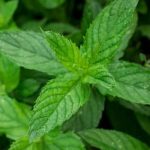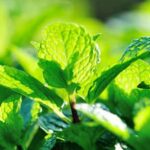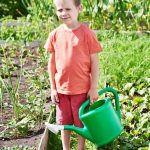Container gardening vegetables and herbs has become increasingly popular for urban dwellers and individuals with limited outdoor space. This method of growing edible plants in containers offers a practical, accessible, and sustainable solution for those who want to enjoy fresh produce right from their own homes. In this article, we will explore the numerous benefits of container gardening and provide valuable insights on how to start your own thriving vegetable and herb garden in containers.
Whether you live in an apartment with a small balcony or have limited backyard space, container gardening allows you to cultivate a variety of vegetables and herbs without the need for a traditional garden plot. With the right containers, soil, and care, anyone can enjoy a bountiful harvest of home-grown produce. From tomatoes and peppers to basil and thyme, growing your own vegetables and herbs in containers is not only achievable but also rewarding.
In this section, we will discuss the advantages of container gardening as well as provide an overview of what you can expect from the rest of the article. From choosing the right containers to managing pests and diseases, we will cover all aspects of successful container gardening for vegetables and herbs.
Whether you are new to gardening or looking for innovative ways to make the most of limited space, this guide will equip you with the necessary knowledge and skills to create your very own thriving container garden.
Choosing the Right Containers for Your Vegetable and Herb Garden
When it comes to container gardening vegetables and herbs, choosing the right containers is essential for the success of your garden. The ideal containers for growing vegetables and herbs in a small space are those that provide adequate space for root growth, good drainage, and are made from non-toxic materials. Here are some helpful tips for selecting the right containers for your vegetable and herb garden.
Container Size and Depth
The size and depth of the container play a crucial role in the successful growth of vegetables and herbs. Larger vegetables such as tomatoes, peppers, and eggplant require deeper containers to accommodate their extensive root systems. On the other hand, shallow-rooted herbs like basil or oregano can thrive in smaller pots. When choosing containers, consider the specific requirements of each plant to ensure they have enough room to grow and develop properly.
Drainage
Proper drainage is essential for container gardening vegetables and herbs. Without adequate drainage, excess water can accumulate at the bottom of the container, leading to root rot and other diseases. Look for containers with drainage holes at the bottom to allow excess water to escape. Additionally, placing a layer of gravel or small rocks at the bottom of the container can further improve drainage.
Materials
Selecting non-toxic materials for your containers is important, especially when growing edibles such as vegetables and herbs. Avoid using containers made from treated wood or plastic that may leach harmful chemicals into the soil. Opt for containers made from food-grade plastic, untreated cedar or redwood, ceramic, or terracotta. These materials are safe for growing edible plants and will not pose any health risks.
By taking these factors into consideration when choosing containers for your vegetable and herb garden, you can create an optimal environment for your plants to thrive and produce an abundant harvest in a small space.
Selecting the Best Vegetables and Herbs for Container Gardening
When it comes to container gardening vegetables and herbs, choosing the right plants is essential for successful growth and yield. Not all vegetables and herbs are suitable for growing in containers, so it’s important to select the best ones that will thrive in this environment. Here are some of the top choices for vegetables and herbs that are well-suited for container gardening:
- Tomatoes: Tomatoes are one of the most popular vegetables to grow in containers. There are many varieties available, from cherry tomatoes to beefsteak tomatoes, making them versatile for different container sizes.
- Peppers: Both sweet peppers and spicy peppers can be grown in containers. They have shallow roots, making them ideal for smaller pots or hanging planters.
- Lettuce: Lettuce is a great option for those with limited space. It grows quickly and can be harvested multiple times throughout the growing season.
- Herbs: Many herbs thrive in containers, including basil, parsley, cilantro, and mint. They can be grown together in a single large container or individually in smaller pots.
When selecting vegetables and herbs for your container garden, consider the amount of sunlight your outdoor space receives. Most vegetables and herbs require at least 6-8 hours of sunlight per day, so it’s important to choose plants that will thrive in your specific location.
Another factor to consider is the mature size of the plants. Some vegetables, like squash or cucumbers, require a lot of space to spread out as they grow. If you have limited space, it’s best to stick with compact or dwarf varieties that are better suited for containers.
By carefully selecting the best vegetables and herbs for your container garden, you can ensure a bountiful harvest and enjoy fresh produce right from your own home.
Tips for Proper Soil and Fertilization for Successful Container Gardening
When it comes to container gardening vegetables and herbs, proper soil and fertilization are key components to ensure a successful harvest. Using the right soil mix and providing adequate nutrients are essential for the healthy growth of your plants. Here are some tips to help you achieve thriving vegetables and herbs in your container garden:
1. Choose the Right Soil Mix: Selecting a high-quality potting mix is crucial for the success of your container garden. Look for mixes that are specifically formulated for growing vegetables and herbs in containers. These mixes provide good drainage, aeration, and sufficient nutrients to support the plants’ growth.
2. Incorporate Organic Matter: Adding organic matter such as compost or well-rotted manure to your soil mix can enhance its fertility and improve its texture. Organic matter helps retain moisture, encourages beneficial microbial activity, and provides essential nutrients to your plants.
3. Fertilize Regularly: Container-grown vegetables and herbs require regular fertilization due to the limited space and nutrients available in their environment. Use a balanced, slow-release fertilizer or organic liquid fertilizer to provide essential nutrients throughout the growing season. Be sure to follow the recommended dosage on the product label to avoid over-fertilization.
In addition to these tips, it’s important to monitor the condition of your soil regularly by checking its moisture levels, pH balance, and nutrient content. By providing a suitable growing medium and proper fertilization, you can create an ideal environment for your container gardening vegetables and herbs to flourish.
Watering and Maintenance
Importance of Proper Watering and Maintenance
Proper watering and maintenance are crucial for the success of container gardening vegetables and herbs. Unlike traditional garden beds, containers can dry out quickly, especially during hot weather. It’s essential to stay on top of watering and regular maintenance to ensure that your plants thrive and produce a bountiful harvest.
Watering Techniques for Container Gardening
When it comes to watering container gardening vegetables and herbs, it’s important to strike the right balance. Overwatering can lead to root rot, while underwatering can result in stunted growth and poor fruit production. To maintain optimal soil moisture, consider using a drip irrigation system or self-watering containers. Alternatively, you can monitor the moisture level by sticking your finger into the soil. If it feels dry an inch below the surface, it’s time to water.
Maintenance Tasks for Healthy Plants
In addition to proper watering, regular maintenance is essential for keeping your vegetables and herbs thriving in containers. This includes removing dead or yellowing leaves, pruning overgrown branches, and fertilizing as needed. Keep an eye out for any signs of pests or diseases, such as yellowing leaves or chewed foliage, and take appropriate action to prevent infestations from spreading. By staying on top of these tasks, you’ll help your container garden flourish throughout the growing season.
Managing Pests and Diseases in Your Container Garden
Container gardening vegetables and herbs can be a great way to grow your own produce even if you have limited space. However, just like traditional garden beds, container gardens are also susceptible to pests and diseases that can affect the health of your plants. It’s important to be proactive in managing these issues to ensure a successful harvest.
One of the first steps in pest and disease management is prevention. Before planting your vegetables and herbs, make sure to inspect your containers for any signs of pests or diseases. Choose high-quality potting mix that is well-draining and free from pathogens that can cause plant diseases. Additionally, consider using companion planting techniques, such as planting marigolds with your vegetables, which can help deter pests.
Regular monitoring of your container garden is essential for detecting any early signs of pests or diseases. Keep an eye out for common issues like aphids, spider mites, and powdery mildew. If you notice any problems, take action immediately to prevent them from spreading to other plants. This could involve removing affected leaves or using organic pest control methods like neem oil or insecticidal soap.
It’s also important to practice good sanitation in your container garden by keeping the area free from debris and fallen leaves, which can harbor pests and diseases. By staying vigilant and implementing proactive management strategies, you can minimize the impact of pests and diseases on your container-grown vegetables and herbs.
| Prevention Techniques | Management Strategies |
|---|---|
| Inspect containers before planting | Use organic pest control methods |
| Choose high-quality potting mix | Maintain good sanitation practices |
| Practice companion planting | Regular monitoring for early signs of pests/diseases |
Harvesting and Enjoying the Fruits of Your Container Gardening Labor
Once you have successfully grown your vegetables and herbs in containers, it’s time to enjoy the fruits of your labor. Harvesting your homegrown produce is a satisfying experience that allows you to enjoy fresh and flavorful ingredients in your cooking. Whether you’re picking a handful of ripe cherry tomatoes or snipping fresh basil for a caprese salad, container gardening vegetables and herbs bring the joy of homegrown produce right to your doorstep.
One of the benefits of container gardening is that you can start harvesting your vegetables and herbs earlier than traditional gardeners. Since containers can be placed in sunny spots or on patios, they tend to warm up faster than garden beds, resulting in quicker growth for your plants. This means that you can start enjoying the flavors of your hard work earlier in the season.
To get the best flavor and nutrition from your vegetables and herbs, it’s important to harvest them at the peak of ripeness. For most vegetables, this means picking them just before they are fully mature. Herbs should also be harvested before they flower for optimal flavor. When harvesting leafy greens like lettuce or spinach, pick outer leaves first to encourage continuous growth throughout the season.
| Container Gardening Benefits | Harvesting Tips |
|---|---|
| Allows for early harvesting | Harvest at peak ripeness |
| Brings joy of homegrown produce | Pick herbs before flowering |
| Fresh and flavorful ingredients | Pick outer leaves for continuous growth |
Creative Container Gardening Ideas for Small Spaces
Container gardening is a fantastic solution for individuals with limited space who still want to enjoy the benefits of growing their own vegetables and herbs. Whether you live in an apartment with a small balcony, or have limited yard space, container gardening allows you to make the most of your available area. There are various creative ideas that can help maximize your small space and allow you to have a flourishing vegetable and herb garden.
One creative idea for small spaces is to utilize vertical gardening techniques. Vertical gardens take advantage of unused wall space by utilizing hanging containers, vertical planters, or even creating trellises for vining plants. This not only saves space but also creates an aesthetically pleasing garden display. Additionally, using tiered plant stands or shelves can allow for more plants to be grown in a smaller footprint, maximizing the available space.
Another creative idea for small spaces is to use multi-functional containers. For example, using railing planters that can hang over patio railings or window boxes that attach directly outside of windows can create additional growing space without taking up ground space. Additionally, consider using portable and stackable containers that can be easily rearranged to optimize sun exposure throughout the day.
When considering creative container gardening ideas for small spaces, it’s important to think outside the box and consider unconventional container options. Utilizing items such as recycled buckets and bins, hanging shoe organizers, or even repurposed furniture like old dressers or crates can provide unique and effective planting solutions for those with limited areas for gardening. By thinking creatively and utilizing different container options, anyone can successfully grow a bountiful variety of vegetables and herbs regardless of their living situation.
The Benefits of Container Gardening
In conclusion, container gardening vegetables and herbs offers a multitude of environmental, health, and cost-effective advantages. Not only does it allow individuals with limited outdoor space to grow their own produce, but it also promotes sustainability by reducing the carbon footprint associated with traditional farming methods. By choosing organic soil and fertilizers, container gardening can contribute to a healthier environment by minimizing the use of harmful chemicals.
From a health perspective, container gardening provides an easy way for people to have access to fresh, nutritious vegetables and herbs right at their fingertips. This promotes a diet rich in vitamins and minerals, which can lead to improved overall well-being. Additionally, the act of tending to a garden has been shown to reduce stress and provide a sense of accomplishment – both beneficial for mental health.
Furthermore, container gardening can be a cost-effective alternative to purchasing expensive organic produce at the grocery store. With the right containers and careful maintenance, individuals can enjoy a continuous supply of homegrown vegetables and herbs at a fraction of the cost.
This not only saves money in the long run but also reduces reliance on mass-produced foods that may contain harmful pesticides or preservatives. In summation, the benefits of container gardening are far-reaching and make it an appealing option for anyone looking to cultivate their own harvest of fresh, healthy produce.
Frequently Asked Questions
What Vegetables and Herbs Grow Well in Pots?
Many vegetables and herbs are well-suited for growing in pots, including tomatoes, peppers, lettuce, kale, spinach, basil, cilantro, and chives. These plants thrive in the confined space of a pot and can be easily cared for.
What Are the Best Vegetables for Container Gardening?
The best vegetables for container gardening are those that don’t require a lot of space to grow and can adapt well to the constraints of a pot. Some examples include cherry tomatoes, cucumbers, radishes, carrots, green beans, and Swiss chard. These vegetables are perfect for small-space gardening.
What Vegetables Grow Well Together in a Container?
Certain vegetables thrive when grown together in a container due to their complementary needs or growth habits. For example, planting lettuce with radishes works well because radishes mature quickly and can be harvested before the lettuce needs more room to grow.
Similarly, planting tomatoes with basil not only saves space but also enhances the flavor of the tomatoes while deterring pests. Experimenting with different combinations can lead to successful container gardening partnerships.

If you’re looking to get into vegetable gardening, or are just looking for some tips on how to make your current garden better, then you’ve come to the right place! My name is Ethel and I have been gardening for years. In this blog, I’m going to share with you some of my best tips on how to create a successful vegetable garden.





